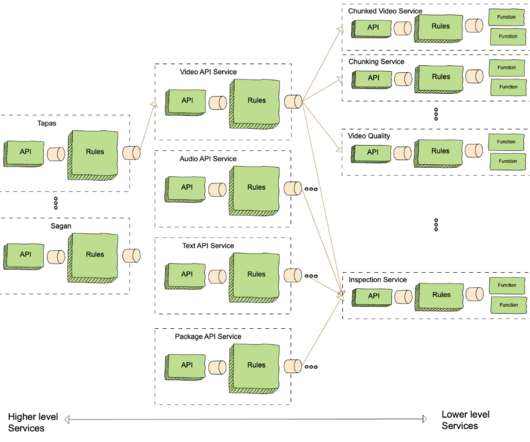Rebuilding Netflix Video Processing Pipeline with Microservices
The Netflix TechBlog
JANUARY 10, 2024
The Netflix video processing pipeline went live with the launch of our streaming service in 2007. This architecture shift greatly reduced the processing latency and increased system resiliency. The service also provides options that allow fine-tuning latency, throughput, etc., divide the input video into small chunks 2.















Let's personalize your content